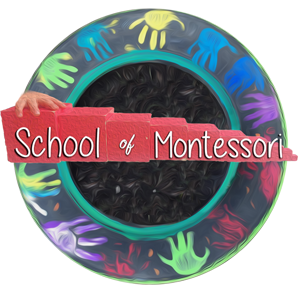- Have the child build the triangles as in First Presentation.
- Teach the names of the total figures.
- Bring down the gray triangle and say: This is an equilateral triangle.” Have the child repeat.
- Explain to her that it is called an equilateral triangle because all three sides are the same length. If the child has difficulty comprehending the concept, show her with a piece of paper and pencil.
- Bring down the green triangle and set it to the right of the gray one.
- Say: “Do you know what we call this triangle? We call it an equilateral triangle.” Show the child that they are the same by placing the gray on top of the green triangle.
- Bring down the other triangles, one at a time, and repeat the procedure. Be sure the child understands that the triangles are all the same.
- After the child learns that they area all equilateral triangles, next do a Three Period Lesson on the individual parts.
- They should know the equilateral, right angled scalene, obtuse angled isosceles from the Rectangular Box.
- After the child has learned all the names, allow them to explore the box by building with it.
- When the child can build triangles successfully, have them trace pattern on paper, cut and color.
- Much later, talk about the shapes and show the child that sometimes different shapes have the same area (hexagon, rhombus, square.)
- Teacher builds a different figure using pieces of equal area as the ones used by the child.
- When finished, return the triangles to their place on the rug, from there to the box, then the box to the shelf.
POINTS OF INTEREST
- Tracing the black lines.
- Matching the triangles.
- Superimposing the gray triangle.
- Making the one big triangle.
- Indirect superimposing when putting them back in the box.
- Naming the shapes and the various triangles used to make them.
CONTROL OF ERROR
- Black guides.
- Different colors of triangles.
DIRECT AIMS
- Showing that different sets of triangles, when put together, are equal in size to the gray triangle.
- Development of the ability to discriminate geometric forms.
- Growth in concentration and independence.
INDIRECT AIMS
- Preparation for Geometry.
- Development of appreciation of line and form.
- Development of creativity.
